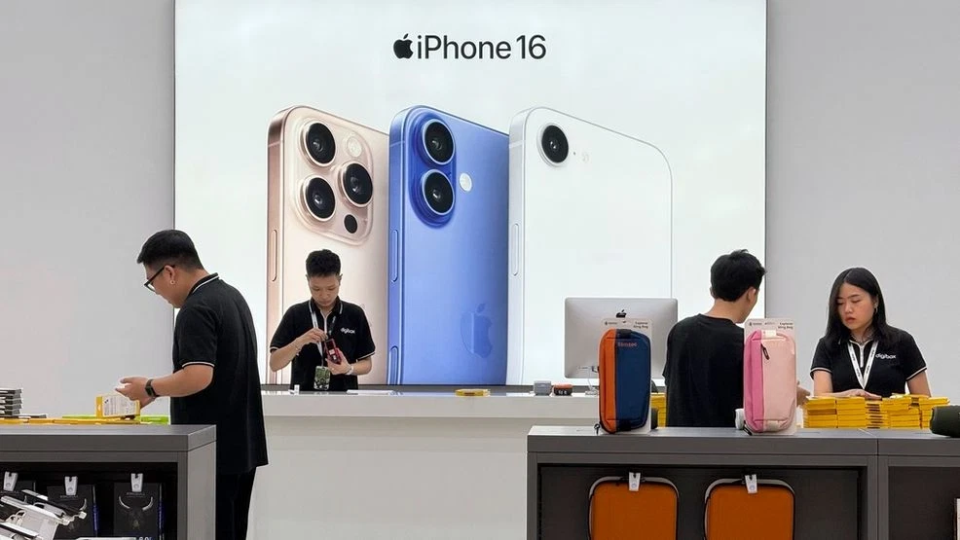In a move that could reshape global supply chains for one of the world’s most valuable companies, President Donald Trump today called on Apple (AAPL, NASDAQ) to manufacture its iPhones in the United States or face a hefty 25% tariff on imports. The demand, posted on Trump’s Truth Social platform, is the latest in a series of high-profile interventions targeting major American corporations and their overseas production strategies.
Trump’s statement was direct and unequivocal. “I have long ago informed Tim Cook of Apple that I expect their iPhone’s that will be sold in the United States of America will be manufactured and built in the United States, not India, or anyplace else,” Trump wrote. “If that is not the case, a Tariff of at least 25% must be paid by Apple to the U.S.”
The comment reignites a long-running debate about the role of American companies in domestic manufacturing and the broader implications for trade policy. Apple, whose shares are listed as AAPL on the NASDAQ, has long relied on a complex global supply chain, with key manufacturing partners based in China, India, and other countries. Moving iPhone production to the United States would be a monumental shift, given the scale and sophistication of Apple’s current operations.
Apple’s stock has been a mainstay of the technology sector, with investors closely watching how the company navigates geopolitical risks and regulatory pressures. The company’s reliance on international manufacturing has helped it maintain competitive pricing and rapid innovation cycles, but it also exposes the firm to trade tensions and policy shifts from Washington. Trump’s latest remarks suggest that, should he return to office, Apple could face significant new costs or be forced to rethink its supply chain strategy.
The idea of reshoring iPhone production is not new, but the practical challenges are substantial. Apple’s manufacturing partners, such as Foxconn and Pegatron, have built vast ecosystems of suppliers and skilled labor in Asia. Replicating that infrastructure in the United States would require massive investment, not just from Apple but from its suppliers as well. Labor costs, regulatory hurdles, and the availability of skilled workers are all factors that could complicate any transition.
Analysts point out that a 25% tariff on imported iPhones would likely be passed on to consumers in the form of higher prices. Apple has historically absorbed some tariff costs, but a levy of this size could force the company to reconsider its pricing strategy or accelerate efforts to diversify its manufacturing base. The company has already begun to shift some production to India and Vietnam, partly in response to earlier trade tensions between the U.S. and China. However, Trump’s latest comments suggest that simply moving production out of China may not be enough to satisfy his administration’s demands.
Investors are watching closely for any signs of how Apple might respond. The company has not issued a public statement in response to Trump’s post, but previous comments from CEO Tim Cook have emphasized the importance of flexibility and supply chain resilience. Cook has also highlighted Apple’s investments in U.S. manufacturing, including the production of Mac computers in Texas and components for other devices made domestically. Still, the vast majority of iPhones continue to be assembled overseas.
Trading in Apple’s stock was notably volatile following the tariff threat. As trading got underway, the stock opened lower than the previous close, at $193.67, down over 3%. The move was accompanied by elevated trading volume, as investors reacted swiftly to the news, and the broader tech sector also felt the ripple effects of the announcement
The broader implications for the technology sector are also worth considering. If Apple were to shift significant production to the United States, it could set a precedent for other tech giants facing similar pressures. Companies like Microsoft, Google, and Amazon could find themselves under increased scrutiny over their own supply chains and manufacturing practices.
In the meantime, Apple’s leadership faces a delicate balancing act. The company must weigh the costs and benefits of reshoring production against the potential for higher tariffs and political pressure. For now, the status quo prevails, but Trump’s latest comments are a reminder that the global business environment remains unpredictable.
Apple’s stock continues to be a bellwether for the technology sector, and its decisions in the coming months could have ripple effects across the industry.

